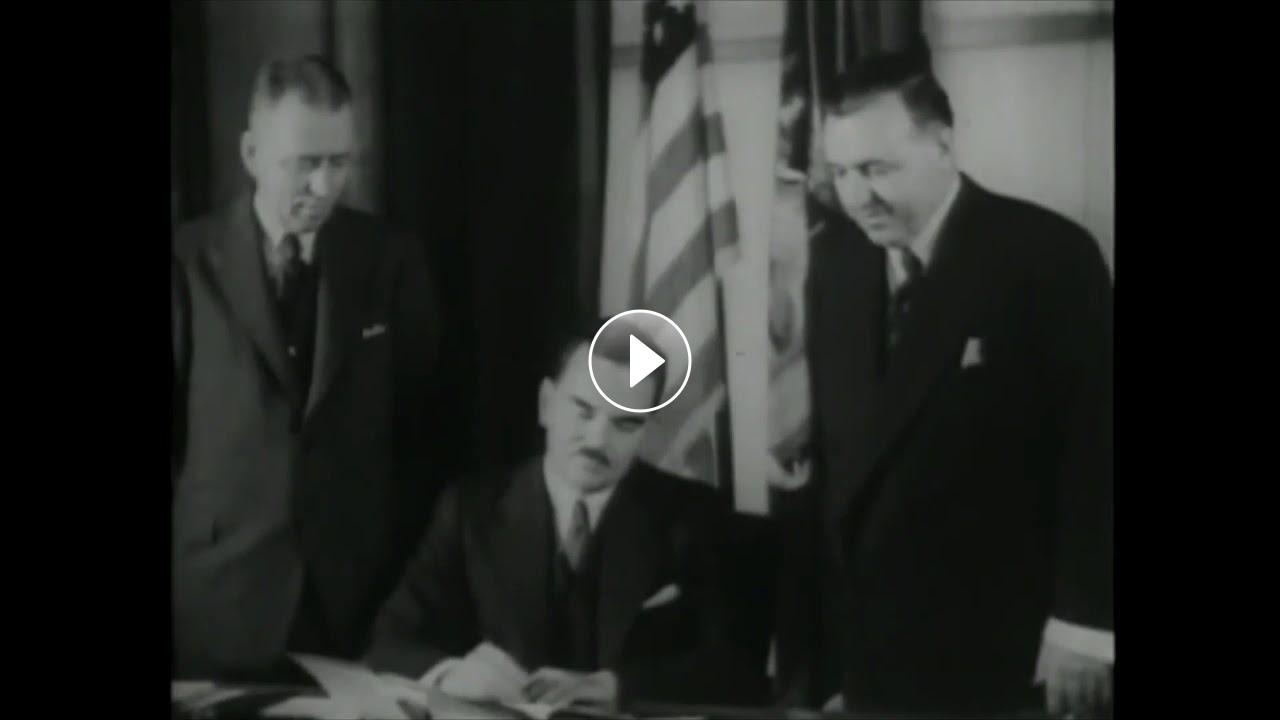March 12, 2025 to All Faculty and Staff
March 12, 1945 - New York Leads the Way
80th Anniversary of the New York State Ives-Quinn Anti-Discrimination Law
On March 12, 1945, New York Governor Thomas E. Dewey signed landmark civil rights
legislation prohibiting employment discrimination based on race, color, creed, and
national origin in both the public and private sectors. The Ives-Quinn Anti-Discrimination
Law was the first law of its kind to govern employment discrimination in the United
States and perhaps the world.

The Ives-Quinn Anti-Discrimination Law, named after the bill’s co-sponsors, New York
State Senators Irving M. Ives (left) and Elmer F. Quinn (right), was introduced in
response to widespread racial discrimination in employment, particularly affecting
African Americans, Jewish Americans, and other groups. It passed the New York State
Senate with broad bipartisan support, 49-6.
The law established the New York State Commission Against Discrimination (SCAD), the
first permanent agency ever empowered to enforce anti-discrimination policies, conduct
investigations and hearings, and issue penalties. It was modeled after the Fair Employment
Practices Commission, which Franklin Roosevelt established during the Second World
War to remedy employment discrimination by federal agencies and contractors involved
in war production.
The passage of Ives-Quinn, and the creation of SCAD, marked a significant step in
the fight for civil rights in the U.S. by firmly establishing that state governments
could take proactive measures against discrimination. Several other states soon passed
similar anti-discrimination laws, and the federal government later incorporated these
principles into broader civil rights legislation and protections, such as the Civil
Rights Act of 1964 and the creation of the Equal Opportunity Commission (EEOC). In
1968, the Ives-Quinn Anti-Discrimination Law was expanded and renamed the New York State Human Rights Law, and SCAD was re-branded as the New York State Division of Human Rights.
Since 1968, New York State Human Rights Law has not remained stagnant. It has been
amended many times, expanding both its reach and the protected classes it serves.
As recently as December 2022 and November 2023, Governor Kathy M. Hochul signed amendments
to the law, adding citizenship and immigration status to the list of protected classes
and extending the statute of limitations for filing sexual harassment complaints.
As a result, New York State Human Rights Law remains as much a model for other states
and nations to follow today as Ives-Quinn was in 1945. It prohibits discrimination
in employment, housing, credit, education, and places of public accommodation based
on age, arrest record, citizenship or immigration status, conviction record, creed,
religion, disability, status as a victim of domestic violence, familial status, gender
identity or expression, lawful source of income, marital status, national origin,
predisposing genetic characteristics, pregnancy-related condition, race, color, sex,
or sexual orientation.
The legacy of the Ives-Quinn Anti-Discrimination Law endures as a testament to New
York State’s leadership in civil rights and equality of opportunity. What began as
a groundbreaking measure to combat employment discrimination has evolved into one
of the most comprehensive civil rights frameworks in the nation. By continually expanding
its scope to address emerging forms of discrimination, New York State has again and
again reaffirmed its commitment to ensuring that the people of New York do not face
discriminatory barriers to security and success.
The principles established by Ives-Quinn and enshrined in New York State's Human Rights
Law remain a powerful model for advancing civil rights and ensuring equal and merit-based
opportunity for all.

